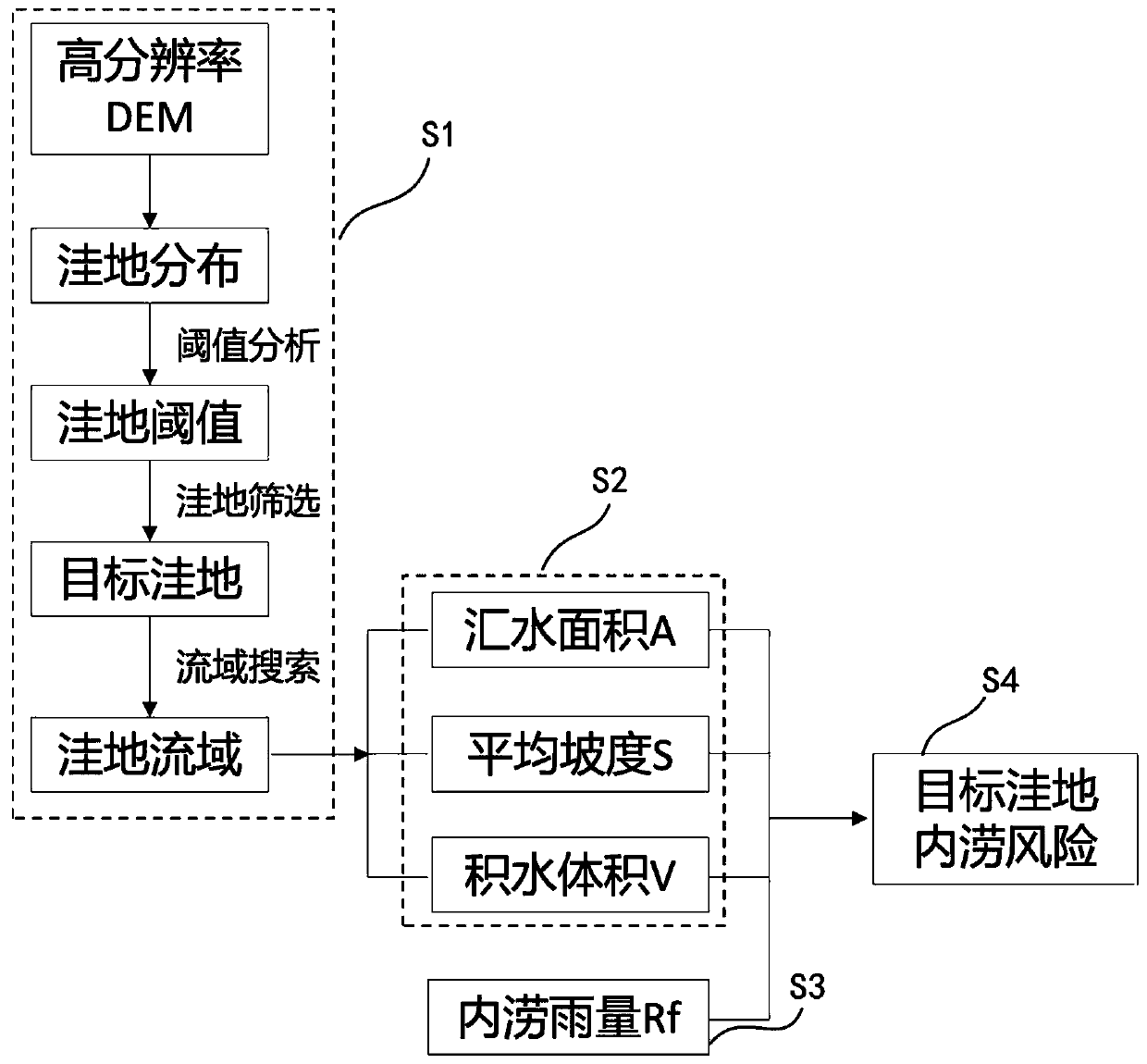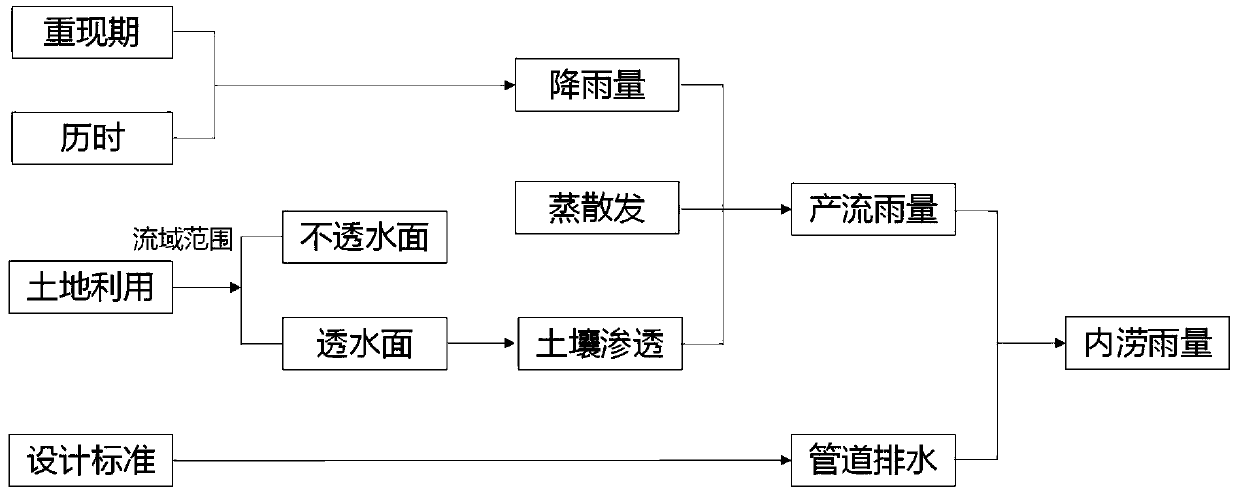Urban inland inundation risk rapid assessment method and system
A technology for urban waterlogging and risk, applied in the fields of instruments, character and pattern recognition, data processing applications, etc., can solve the problems of high modeling ability requirements, poor practicability, and low computing efficiency.
- Summary
- Abstract
- Description
- Claims
- Application Information
AI Technical Summary
Problems solved by technology
Method used
Image
Examples
Embodiment 1
[0054] This embodiment provides a method for rapid assessment of urban waterlogging risk, such as figure 1 and 2 shown, including the following steps:
[0055] S1. For the target area, identify the potential location of waterlogging according to DEM, delineate the catchment range of each location where waterlogging occurs, and form the corresponding small watershed; since this step is based on DEM, the spatial resolution of DEM and the elevation accuracy It is very important for the rationality of the waterlogging risk assessment results, and the high-precision and high-resolution DEM produced by lidar technology should be used as much as possible when conditions permit. When choosing the spatial resolution of DEM, it is necessary to achieve a certain balance between the accuracy of micro-topography expression (the higher the resolution, the higher the accuracy) and the calculation efficiency (the lower the resolution, the higher the efficiency).
[0056] The specific steps ...
Embodiment 2
[0080] In order to verify the effectiveness of the rapid assessment method of urban waterlogging risk in the above-mentioned embodiment 1, the following example analysis of waterlogging risk was carried out:
[0081] This example analysis is based on a certain area in Guangzhou City, with an area of about 20 square kilometers, an impervious rate of 73%, and a design drainage capacity that can cope with a one-year return period of heavy rain. This example analyzes the waterlogging risk in this area under the 5-year return period rainfall scenario. The specific steps and results are explained as follows:
[0082] (1) Using airborne lidar technology to produce a 1-meter-resolution DEM, set the area threshold of this example to 5000 square meters after depression identification and threshold analysis, and 53 depressions were retained after screening;
[0083] (2) Use the watershed search method to determine the catchment range of each depression, which forms a small watershed wi...
Embodiment 3
[0092] This embodiment provides a rapid urban waterlogging risk assessment system, such as Figure 7 shown, including:
[0093] Small watershed building block 1, which is used to identify potential waterlogging occurrence locations in the target area based on DEM, delineate the water catchment range of each waterlogging occurrence location, and form corresponding small watersheds;
[0094] The small watershed attribute calculation module 2 is used to calculate the attributes of each small watershed, including its catchment area A, average slope S, and water volume V;
[0095] The waterlogging rainfall calculation module 3 is used to set the rainfall scenario. According to the water balance model, considering the impact of drainage system design standards, soil infiltration and evapotranspiration, calculate the waterlogging rainfall R that forms ponding on the surface i ;
[0096] The waterlogging risk assessment module 4 is used to use the small watershed obtained by the sma...
PUM
 Login to View More
Login to View More Abstract
Description
Claims
Application Information
 Login to View More
Login to View More - R&D
- Intellectual Property
- Life Sciences
- Materials
- Tech Scout
- Unparalleled Data Quality
- Higher Quality Content
- 60% Fewer Hallucinations
Browse by: Latest US Patents, China's latest patents, Technical Efficacy Thesaurus, Application Domain, Technology Topic, Popular Technical Reports.
© 2025 PatSnap. All rights reserved.Legal|Privacy policy|Modern Slavery Act Transparency Statement|Sitemap|About US| Contact US: help@patsnap.com



